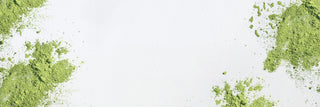
glossary of ingredients
Common Ingredients
Aromatherapeutic essential oil that smells sweet and warm. It is reminiscent of benzoin and possesses a vanilla note with a woody, cedar-like character.The essential oil, like many other resin oils, is said to have beneficial properties for the skin. The beauty of Amyris is its refreshing aroma. The essential oil lifts the spirit and helps instill a sense of calm.
A type of seaweed with many nutrients for skin, including beta-carotene and antioxidants like zeaxanthin and lutein, which help protect skin from the visible effects of light exposure. The natural polysaccharides, peptides, and amino acids in red algae also help skin to stay hydrated; meanwhile, the numerous antioxidants in this and other types of algae can help shield skin from damaging airborne pollutants. Chondrus crispus contains carrageenan, which forms a flexible film on the skin that offers further defense against environmental stressors and moisture loss.
An emollient used in cosmetics with smoothing and moisturizing properties for dry skin. Rich in vitamins and fatty acids, it penetrates deeply and leaves a smooth, satiny finish. Shea Butter can be used to make massage butters, body butters, lip balms, and as a moisturizing agent in soaps and shaving creams.
Describes a family of algae that dwell in the intertidal pools of the ocean. They are rich in polysaccharides (alginic acid, fucoidan, laminaran), trace elements such as iodine and minerals. The richest mineral concentration is in Laminaria algae. However, Fucus, Ascophyllum, Macrocystis, Dictyopteris, Sargassum and Ecklonia are important brown algae in their own right. They are classified as “brown” algae due to the presence of large amounts of carotenoids such as beta-carotenes.
Green Tea has potent antioxidants and skin-soothing properties, and has been shown to provide significant improvements to the appearance of sun-damaged skin.
Aromatherapeutic essential oil that includes potent antioxidants and may help improve uneven skin tone.
An emulsifier used to combine ingredients that normally don't mix together, such as oil and water.
A type of seaweed with many nutrients for skin, including beta-carotene and antioxidants like zeaxanthin and lutein, which help protect skin from the visible effects of light exposure. The natural polysaccharides, peptides, and amino acids in red algae also help skin to stay hydrated; meanwhile, the numerous antioxidants in this and other types of algae can help shield skin from damaging airborne pollutants. Chondrus crispus contains carrageenan, which forms a flexible film on the skin that offers further defense against environmental stressors and moisture loss.
Aromatherapeutic essential oil with protective properties, such as antioxidants, that may brighten and preserve skin tone. Studies have shown it’s effect against infection causing bacteria and it’s possible skin inflammation prevention properties.
Aromatherapeutic essential oil with protective properties, such as antioxidants, that may brighten and preserve skin tone. Studies have shown it’s effect against infection causing bacteria and it’s possible skin inflammation prevention properties.
An emollient in cosmetics and has smoothing properties for dry skin. Exuding a natural and pleasant coconut aroma, it has a soft texture with a rich viscosity that melts quickly on contact with the skin. Retaining the unique conditioning and penetrative benefits of Coconut Oil, this decadent butter acts as a gentle yet highly protective emollient for rejuvenating the appearance of dry or damaged skin.
A natural surfactant, ideal for foaming and cleansing. Decyl Glucoside is obtained from renewable raw materials, through a combination of plant based fatty alcohols and glucose. Decyl Glucoside is mild, gentle and does not dry the skin.
A complex sugar molecule found in Brown Algae, it has been shown to strengthen the connective tissue matrix by stimulating collagen and elastin synthesis (Pierre & Marie Curie School of Medicine, Paris). Laminaria and Fucus algae extracts have significant quantities of this sugar responsible for skin firmness as evidenced by increased production of collagen and fibroblasts. As a nutritional supplement, Fucose provides anti-tumor qualities with antioxidant power.
A naturally sourced ingredient with emollient-like properties which can smooth and soften the skin and assists the skin’s surface to retain moisture.
An AHA with the smallest sized molecule of all the alpha-hydroxy acids, which allows it to easily penetrate the skin and exfoliate more effectively than other AHAs. It helps dissolve the bonds that hold skin cells together, allowing dead skin cells to slough off more rapidly than they would on their own. Glycolic acid also stimulates your skin to create more collagen. Glycolic acid plumps the skin and helps boost hydration levels.
Sunflower Oil has high amounts of Vitamins A, B, D and E, minerals, lecithin, insulin, unsaturated fatty acids, and by all accounts, it is a good product for the skin.
The up-regulation of the various growth factors, matrix proteins and cell shock/cell stress genes is directly related to skin firming, skin renewal and water retention. In addition, stress proteins can play a role in cellular apoptosis, the programmed cell death sequence. Upregulation of the lipid genes suggests that Hexapeptide-11 may play a role in improving skin lipid integrity and development.
A natural source of AHAs, it helps to remove dead skin cells, unclog pores, gently exfoliate and brighten, all of which can encourage smoother, and younger-looking skin. AHAs are also known for brightening skin tone and reducing signs of hyperpigmentation, like dark spots or acne scars. Hibiscus Flower Acid includes all of the benefits of other AHA's, but with additional cellular support and less irritation. It is less damaging to the skin than other AHAs which makes it perfect for sensitive skin or for those who need to exfoliate more often.
Anitoxidant rich, aromatherapeutic essential oil. Studies have shown it’s effect against infection causing bacteria and fungus, anaglesic effects, it’s possible skin inflammation prevention properties.
Studies show that Laminaria is effective in protecting the integrity of mitochondrial DNA. The mitochondria is the powerhouse of the cell where cellular metabolism occurs. Damage to this organelle can lead to leakage into the cytoplasm of toxic metabolites that lead to senescence. Use of Laminaria repairs the mitochondrial membranes to prevent damage.
Aromatherapeutic essential oil. Studies have shown it’s effect as an anti-septic and it’s anti-inflammatory properties when applied topically.
Describes an enormous family of undersea plants—from the microscopic plankton and blue-green cyanobacteria to the giant kelp off the coast of California. Unlike their terrestrial counterparts, marine algae obtain all of their nutrients directly from seawater via osmosis. Nutritionally, one might say that these plants are pure concentrates of the elements found in seawater. When applied in skin care, these elements are easily and efficiently absorbed due to their bio-compatibility with the body.
Aromatherapeutic essential oil with analgesic and astringent effects.
“They are the meadows of the sea” according to James Lovelock author of the Gaia Hyposthesis. Covering the upper layers of the vast oceans of the world, they are responsible for 70% of our oxygen. They are the base of the food chain feeding all marine life forms from shrimps to the giant whales. Plankton contain many anti-aging ingredients including DNA repairing photolyase enzymes vital to maintaining healthy skin.
Perfluorodecalin & Perfluorohexane are combined to create what we call "Liquid Oxygen". It is not literally liquified oxygen, but an ingredient that can uniquely seal moisture into your skin while allowing gases like oxygen to pass through. This ingredient supports your skin's protective barrier and is especially useful after microneedling and laser treatments. "Liquid Oxygen" acts like a breathable bandage, keeping your micro-wounds and new skin protected and able to heal more quickly and efficiently, which boosts the procedure's effectiveness in building collagen and smoothing texture. Perfluoro-esters are both lipo-phobic and hydro-phobic which when penetrating into the dermis, adds 15% in volume which reduces the appearance of wrinkles. It also refracts light for an immediate skin-smoothing cosmetic effect.
Describes a family of seaweeds that are characterized by a red pigment that colors these marine plants with red to purple hues. Red algae dwell in the deeper waters on the continental shelf where sunlight is scarce. The red pigment captures the scarce (blue) light and is vital in photosynthesis. Red algae are rich in amino acids and essential fatty acids. Porphyra (nori), palmaria (dulse), Irish Moss, agar agar are among the most important species.
Antioxidant found in red wine and Mexican bamboo. It is a polyphenol produced by plants as a defense mechanism against disease. Resveratrol has been shown to reduce tumors and inhibit the growth of cancer cells. It also increases cellular metabolism by activating key proteins that have been shown to reduce the signs of aging. It efficiently scavenges oxygen reactive species such as peroxide and protects cells against oxidative stress.
This is a derivative of vitamin A, that we encapsulate in a liposome. It has a molecular structure that’s tiny enough to get into the lower layers of skin, where it finds collagen and elastin. Retinol is proven to improve mottled pigmentation, fine lines and wrinkles, skin texture, skin tone and color, and your skin’s hydration levels
Anitoxidant rich, aromatherapeutic essential oil. Studies have shown it’s anti-septic, analgesic and anti-inflammatory effects.
Aromatherapeutic essential oil. Studies have shown it’s anti-septic, analgesic and anti-inflammatory effects.
Aromatherapeutic essential oil. Studies have shown it’s anti-septic, analgesic and anti-inflammatory effects.
A natural product of the biofermentation of yeast with glucose and inorganic salts. Recognized as the most effective moisturizer ever discovered, a 1% aqueous solution is incredibly effective, even at 0.1-1%, where the biofermentation is capable of holding up to 1,000 times its weight in moisture. Sodium hyaluronate is a derivative of Hyaluronic Acid. Sodium hyaluronate has a lower molecular weight than HA and hydrolyzed HA, so it’s more easily absorbed into pores. Sodium hyaluronate has the ability to penetrate into deeper layers of the skin, and also attracts and binds water. This effect can plump the skin, thus reducing the look of wrinkles and making skin younger looking.
The oil soluble form of Vitamin C is an ester. This is a stable form of the antioxidant that is responsible for stimulating collagen synthesis and repairing cellular membranes which is important in protecting the integrity of cellular DNA. Vitamin-C Esters are found in all of the aromatherapy face oils rendering these essential oils effective in skin repair.
An important anti-oxidant, Vitamin E plays a synergistic role with Vitamin C in the synthesis of collagen. When combined in a liposome, the combined strength of these two antioxidants is increased when bound together. Tocopherol also helps preserve the freshness of products.
Reduces the appearance of skin pigmentation as demonstrated in clinical and in vitro studies, resulting in noticeably brighter, younger-looking skin. It uses pure nature-identical trans-resveratrol that is free from pesticides and emodin, a potential concern with other forms of resveratrol. expression level, leading to decreased expression of MITF-regulated genes such as SILV, TYR (tyrosinae), TRP1, DCT, OCA2 which reduces melanin synthesis. KIT signaling Transresveratrol decreases KIT (=stem cell factor receptor) gene expression which additionally reducesmelanin synthesis. Melanosome function & maturation Transresveratrol also affects the function and maturation of melanosomes by reduction of SLC24A5 and SLC45A2 gene expression levels. Melanosome transport Transresveratrol attenuates melanosome transport within melanocytes, shown by the reduction of the MYO5A and MREG gene expression levels as well as the melanosome transport to keratinocytes, shown by the reduction of RAB 27A gene expression levels.
The pure form of water soluble vitamin C that is able to penetrate deep into the skin. Clinical studies demonstrate that this form of Vitamin C stimulates collagen synthesis and is recognized as a skin lightener.
Common terms
The ability to access and put to productive use the active ingredients contained in each product. For instance, calcium may be in your diet, but due to the lack of sufficient magnesium and/or an over acidic GI tract, the body may fail to absorb this vital mineral. Therefore, in those situations, it is not bio-available. Also pertains to the ability to assimilate active nutrients in the digestive tract. The same is true in skin care. The presence of a balanced grouping of minerals and trace elements found in marine algae are totally bio-available due to their bio-compatibility with the human body.
A much overused term these days. Simply put, the body is stressed with the presence of toxins from many different sources. Some toxins are basically the by-products of metabolism. Every time a cell undergoes metabolism (creation of energy for cellular function), there are waste products (proteins) that are excreted into the surrounding connective tissue. This creates oncotic pressure which draws or traps fluids resulting in congestion and poor circulation. This often leads to damage to the surrounding tissues and results in advanced aging of skin or cellulite.
Other toxins are in the form of harmful chemicals and pollution. When these accumulate in the body, they are stored in its organs such as the liver, kidneys or thyroid and interfere with the body’s functions. Liver damage can result in aging spots, thyroid disorders lead to hormonal imbalances and compromised immunity, etc. All of these manifest themselves visibly on the body in the form of rashes, aging skin, painful joints.
While many toxins are a normal and impreventable part of life, we can help our bodies process them more efficiently with a healthy lifestyle.
There are many aggressors that attack cellular integrity to bring on advanced aging. These include poor nutrition, dehydration, smoking, sun exposure, damage to the skin due to burns or cuts, pesticides, air pollution, water pollution, molds and other microbes.
This refers to molecules that are missing one electron and therefore are ionically charged. They attack cell membranes of the skin, the arterial walls of blood vessels and other tissues. Free radicals cause cellular damage and accelerate the aging process in much the same way as oxygen attacks iron and causes rusting that weakens the metal.
A transport vehicle made from lecithin to drive in larger molecules deep into the dermal matrix and thereby increasing the efficiency and bio-availability of active ingredients in skin rejuvenation.
This is the body’s largest vascular system used in the elimination of cellular wastes and a fortification of its immune system. It is three times larger than the blood circulatory system and specializes in the transport of large protein wastes that are too large to be transported by the circulatory system. These wastes are transported to strategically placed lymph nodes where specialized white blood cells (macrophages) break down these large molecules into smaller particles that can be filtered out by the kidneys.
This is a patented process of pulverizing various marine algae plants through a cold process of shearing the algae cells to a size of less than 40 microns. This effectively bursts the outer cell walls that are difficult to digest to release the payload of minerals and trace elements contained. In other words, these minerals are now “bio-available” as a nutrient. In topical therapies such as body wraps or hydrotherapy bath treatments, these mineral ions are released in greater concentration to penetrate the skin and in a sense, feed the body transdermally.
The ability to penetrate active ingredients through the skin is referred to as transdermal. While the skin's main function is to prevent transdermal absorbtion of many substances as a protective measure, we are able to choose ingredients with the unique ability to be absobred by the skin.
This is possible either by encapsulating the actives into liposomes or nanospheres, using a vehicle such as essential oils, or due to ionization of micro-molecules such as minerals and trace elements.
Essential oils have a molecular structure similar to that of alcohol. The more volatile essential oils such as citrus plants, lavender and thyme are reported to enter the bloodstream within 20-30 minutes following topical application. Heavier oils such as sandalwood take approximately an hour.
Many minerals and trace elements are able to diffuse easily through the skin’s barriers due to their miniscule size. To put it into perspective, difference in size of a molecule of magnesium or potassium, and a collagen molecule is similar to that of a grain of sand compared to a skyscraper. And the difference in size between that same molecule and a skin cell is comparable to the difference between a grain of sand and Mount Elbert of the Rocky Mountains. Studies conducted by the University of Rennes Cancer Research Center demonstrated the viability of dermal absorption of minerals following a warm (98 degrees F) bath. The conclusion was that one can feed the body its minerals transdermally.






